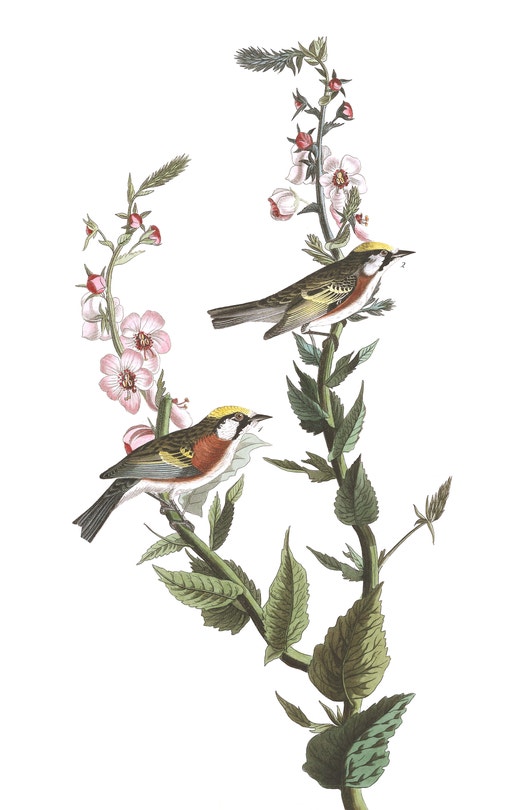July 8.
P. M. — Down river in boat to the Holt.
The small globose white flower in muddy places by river and elsewhere.
The bass on Egg Rock is just ready to expand.
It is perhaps the warmest day yet.
We held on to the abutments under the red bridge to cool ourselves in the shade. No better place in hot weather, the river rippling away beneath you and the air rippling through beneath the abutments, if only in sympathy with the river, while the planks afford a shade, and you hear all the travel and the travellers' talk without being seen or suspected.
The bullfrog it is, methinks, that makes the dumping sound.
There is generally a current of air circulating over water, always, methinks, if the water runs swiftly, as if it put the air in motion. There is quite a breeze here this sultry day.
Commend me to the sub-pontean, the under-bridge, life.
I am inclined to think bathing almost one of the necessaries of life, but it is surprising how indifferent some are to it.
What a coarse, foul, busy life we lead, compared even with the South-Sea-Islanders, in some respects.
Truant boys steal away to bathe, but the farmers, who most need it, rarely dip their bodies into the streams or ponds.
M was telling me last night that he had thought of bathing when he had done his hoeing, — of taking some soap and going down to Walden and giving himself a good scrubbing, — but something had occurred to prevent it, and now he will go unwashed to the harvesting, aye, even till the next hoeing is over.
Better the faith and practice of the Hindoos who worship the sacred Ganges.
We have not faith enough in the Musketaquid to wash in it, even after hoeing.
Men stay on shore, keep themselves dry, and drink rum.
Pray what were rivers made for? One farmer, who came to bathe in Walden one Sunday while I lived there, told me it was the first bath he had had for fifteen years.
Now what kind of religion could his be? Or was it any better than a Hindoo's?
M said that Abel Heywood told him he had been down to the Great Meadows (river meadows) to look at the grass, and that there wasn't a-going to be much of a crop; in some places there wasn't any grass at all. The great freshet in the spring didn't do it any good.
Under the Salix nigra var. falcata, near that handsomest one, which now is full of scythe-shaped leaves, the larger six inches long by seven eighths wide, with remarkably broad lunar leafy appendages or stipules at their base, I found a remarkable moth lying flat on the still water as if asleep (they appear to sleep during the day), as large as the smaller birds.
Five and a half inches in alar extent and about three inches long, something like the smaller figure in one position of the wings (with a remarkably narrow lunar-cut tail), of a sea-green color, with four conspicuous spots whitish within, then a red line, then yellowish border below or toward the tail, but brown, brown orange, and black above, toward head; a very robust body, covered with a kind of downy plumage, an inch and a quarter long by five eighths thick.
The sight affected me as tropical, and I suppose it is the northern verge of some species. It suggests into what productions Nature would run if all the year were a July.
By night it is active, for, though I thought it dying at first, it made a great noise in its prison, a cigar-box, at night. When the day returns, it apparently drops wherever it may be, even into the water, and dozes till evening again.
Is it called the emperor moth? [The luna moth.]
Yesterday I observed the arrow-wood at Saw Mill Brook, remarkably tall, straight, and slender. It is quite likely the Indians made their arrows of it, for it makes just such shoots as I used to select for my own arrows. It appears to owe its straightness partly to its rapid growth, already two feet from the extremities chiefly.
The pontederia begins to make a show now.
The black willow has branches horizontal or curving downward to the water first, branching at once at the ground.
The Sium latifolium, water parsnip, — except that the calyx-leaves are minute and the fruit ribbed, — close to the edge of the river.
H. D. Thoreau, Journal, July 8, 1852
The pontederia begins to make a show now.
The black willow has branches horizontal or curving downward to the water first, branching at once at the ground.
The Sium latifolium, water parsnip, — except that the calyx-leaves are minute and the fruit ribbed, — close to the edge of the river.
H. D. Thoreau, Journal, July 8, 1852












